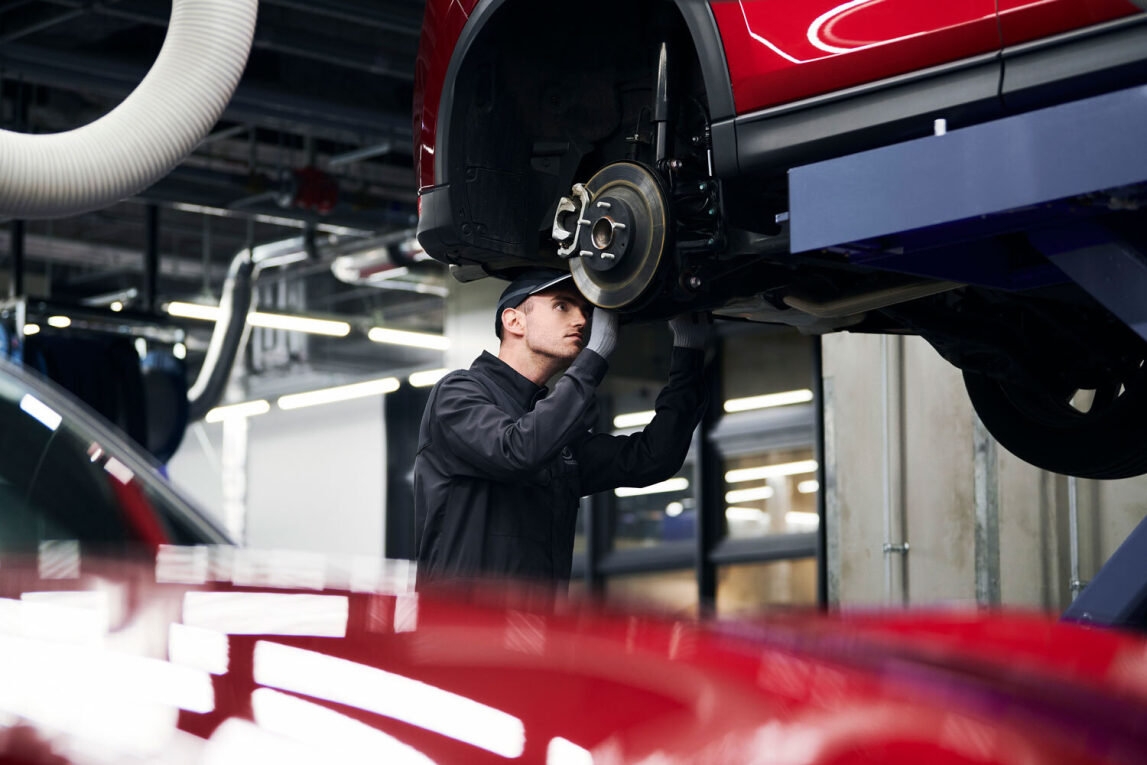
Step on the brake pedal and the car slows down. Press it further and the car stops. Simple. Right? Yes, however, the system is more complex than one might think. Knowing how it works helps ensure it works properly. If you suspect you have a problem with the brakes on your vehicle, bring it in for service or Mazda auto parts at Cook Mazda.
Understand Your Car Brakes
A lot of work goes into making sure you slow down and stop at the right times. The following components make up the essential braking system:
Master Cylinder
The master cylinder converts the force applied to the brake pedal into hydraulic pressure, propelling fluid through the lines and hoses that assist in braking.
Rotors
The brake pads press against circular discs called rotors. This creates the necessary friction to halt wheel rotation.
Calipers
The calipers move a piston forward, pressing the brake pad against the rotor and bringing the inner brake pad into contact with the rotor.
Brake Pads
The brake pads make contact with the rotor. This helps generate the friction needed to halt the vehicle.
Brake Hoses and Fluid
Brake hoses transport fluid to the braking system that helps bring the vehicle to a halt. Hoses linked to each caliper distribute brake fluid to these components and help build pressure in the lines, which energizes the system.
Signs It’s Time for Brake Service
If you feel a vibration when braking, or the pedal feels spongy when pressed, it’s time for service. If your wheels lock or the car pulls to the side while braking, it’s also time for service.
Get Brake Inspections and MAZDA Auto Parts in Aberdeen, MD
Having brakes inspected annually is recommended. Even if no problems are detected initially, a thorough inspection offers an overall assessment of the various components’ health and can predict the timing for future service needs. Schedule brake service with Cook Mazda in Aberdeen, MD today!





